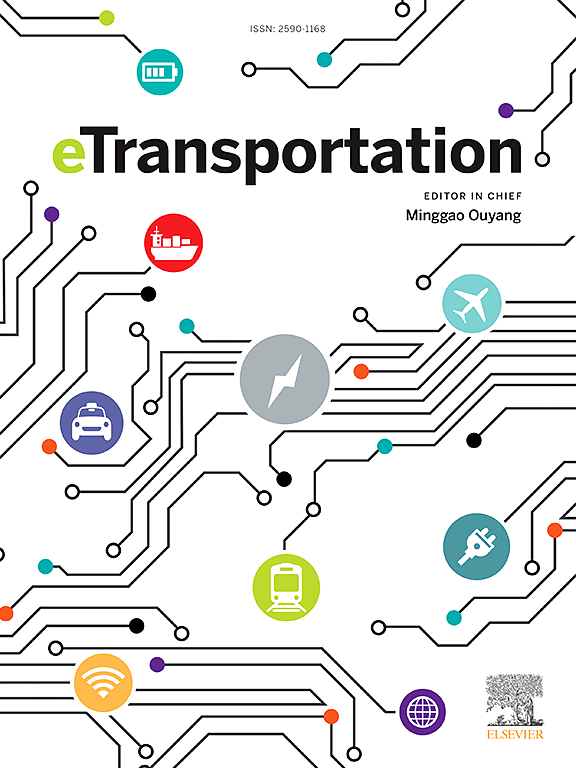Deep learning-based inverse prediction of side pole collision conditions of electric vehicle
IF 17
1区 工程技术
Q1 ENERGY & FUELS
引用次数: 0
Abstract
To improve safety of electric vehicles under side pole collisions, accident reconstruction and failure risk prediction on battery cell are essential. Accident reconstruction and analysis is complex due to structural nonlinearities and vehicle rotation during collision. Such task becomes more challenging due to the ill-posedness of this inverse problem. This study proposed a deep-learning based method to inversely predict the collision conditions when only the deformation of battery pack exterior structure is available. Battery cell deformation was also predicted to assess the accident severity. To build the dataset, a large number of finite element simulations were run at pack level. Compared to the comprehensive coverage of collision condition domain, the collision response domain inevitably exhibits poor filling, leading to non-uniqueness in inverse prediction. To address this, the model was trained with pre- and post-collision images of the side structure. A convolutional neural network integrated with residual network (ResNet) was applied to improve model performance. The amount of input feature information and the network structure were thoroughly discussed. The model also demonstrated good interpretability and robustness, maintaining stable performance with added noise. This proposed approach would become an effective tool for analyzing collision scenarios where limited information is available.

基于深度学习的电动汽车侧杆碰撞条件逆预测
为了提高电动汽车侧杆碰撞的安全性,对电池单体进行事故重构和失效风险预测是十分必要的。由于结构非线性和车辆在碰撞过程中的旋转,事故重建和分析非常复杂。由于逆问题的病态性,这一任务变得更具挑战性。本研究提出了一种基于深度学习的方法,在仅了解电池组外部结构变形的情况下逆预测碰撞情况。还预测了电池变形情况,以评估事故严重程度。为了构建数据集,在包级上运行了大量的有限元模拟。相对于碰撞条件域的全面覆盖,碰撞响应域不可避免的填充性较差,导致逆预测的非唯一性。为了解决这个问题,使用侧面结构的碰撞前和碰撞后图像来训练模型。采用卷积神经网络与残差网络(ResNet)相结合的方法提高了模型的性能。对输入特征信息的数量和网络结构进行了深入的讨论。该模型具有良好的可解释性和鲁棒性,在添加噪声的情况下仍能保持稳定的性能。这种建议的方法将成为分析信息有限的碰撞场景的有效工具。
本文章由计算机程序翻译,如有差异,请以英文原文为准。
求助全文
约1分钟内获得全文
求助全文
来源期刊

Etransportation
Engineering-Automotive Engineering
CiteScore
19.80
自引率
12.60%
发文量
57
审稿时长
39 days
期刊介绍:
eTransportation is a scholarly journal that aims to advance knowledge in the field of electric transportation. It focuses on all modes of transportation that utilize electricity as their primary source of energy, including electric vehicles, trains, ships, and aircraft. The journal covers all stages of research, development, and testing of new technologies, systems, and devices related to electrical transportation.
The journal welcomes the use of simulation and analysis tools at the system, transport, or device level. Its primary emphasis is on the study of the electrical and electronic aspects of transportation systems. However, it also considers research on mechanical parts or subsystems of vehicles if there is a clear interaction with electrical or electronic equipment.
Please note that this journal excludes other aspects such as sociological, political, regulatory, or environmental factors from its scope.
 求助内容:
求助内容: 应助结果提醒方式:
应助结果提醒方式:


